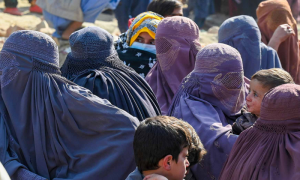Managua, Nicaragua: The flow of money sent home by migrants in the United States to Central America has reached unprecedented levels, offering crucial support to families like that of Marta Alvarado, a mother of three in El Salvador.
These remittances now account for a quarter of the combined economic output of El Salvador, Guatemala, Honduras, and Nicaragua, providing vital assistance to families in these nations.
For Marta Alvarado, these money transfers are a lifeline. “What my brothers send every month not only helps me but also supports my elderly parents,” said Marta, who works as a secretary in a health clinic. “It allows them to afford necessities like food, clothing, and medicine, and even make improvements to their home.”
In 2023, Central America received nearly $42 billion in family remittances, surpassing other key sources of external revenue such as foreign investment, tourism, and exports.
These remittances play a critical role in boosting local trade and consumer spending, particularly in countries grappling with high poverty rates.
Experts attribute the increase in remittances from $19.0 billion in 2017 to $41.8 billion in 2023 to heightened migration, especially to the United States.
While the exact number of Central Americans living abroad is unclear due to irregular migration, estimates suggest around 10 million individuals, representing a quarter of the combined population of the region’s four primary countries.
“People leave their countries when they don’t find opportunities,” explained Henry Rodriguez, an economist at the National Autonomous University of Honduras.
Remittances now constitute a significant portion of GDP in these nations, accounting for nearly 27 percent in Honduras, 26 percent in Nicaragua, 24 percent in El Salvador, and close to 20 percent in Guatemala.
Economist Carlos Acevedo, a former president of El Salvador’s central bank, emphasized the critical role of remittances in sustaining the Salvadoran economy. “Without these remittances, our financial system would have faced significant challenges,” he noted.
In Nicaragua, Ligia Hurtado, a 17-year-old student, relies on funds sent by relatives in Spain to cover university fees, housing, and daily expenses.
Similarly, Emerita Coto, a 61-year-old retiree in El Salvador, uses monthly remittances from her brother in New York to pay for a plot of land purchased on credit.
In contrast, countries with lower emigration rates like Panama and Costa Rica receive minimal remittances, representing only around one percent of GDP.
Organizations like the World Bank and the Inter-American Development Bank advocate for using remittances strategically, promoting investments in small businesses to stimulate economic development and reduce poverty.
Guatemala’s President Bernardo Arevalo shares this perspective, emphasizing the potential of remittances to break the cycle of poverty.
Gustavo Juarez, who leads an association of deported Guatemalans from the US, underscores the importance of investing remittances in businesses or entrepreneurial ventures for long-term impact.
In El Salvador, Marta Alvarado’s mother, Ester, plans to launch a small business with funds from her children abroad, offering hope for additional income and economic stability.
























